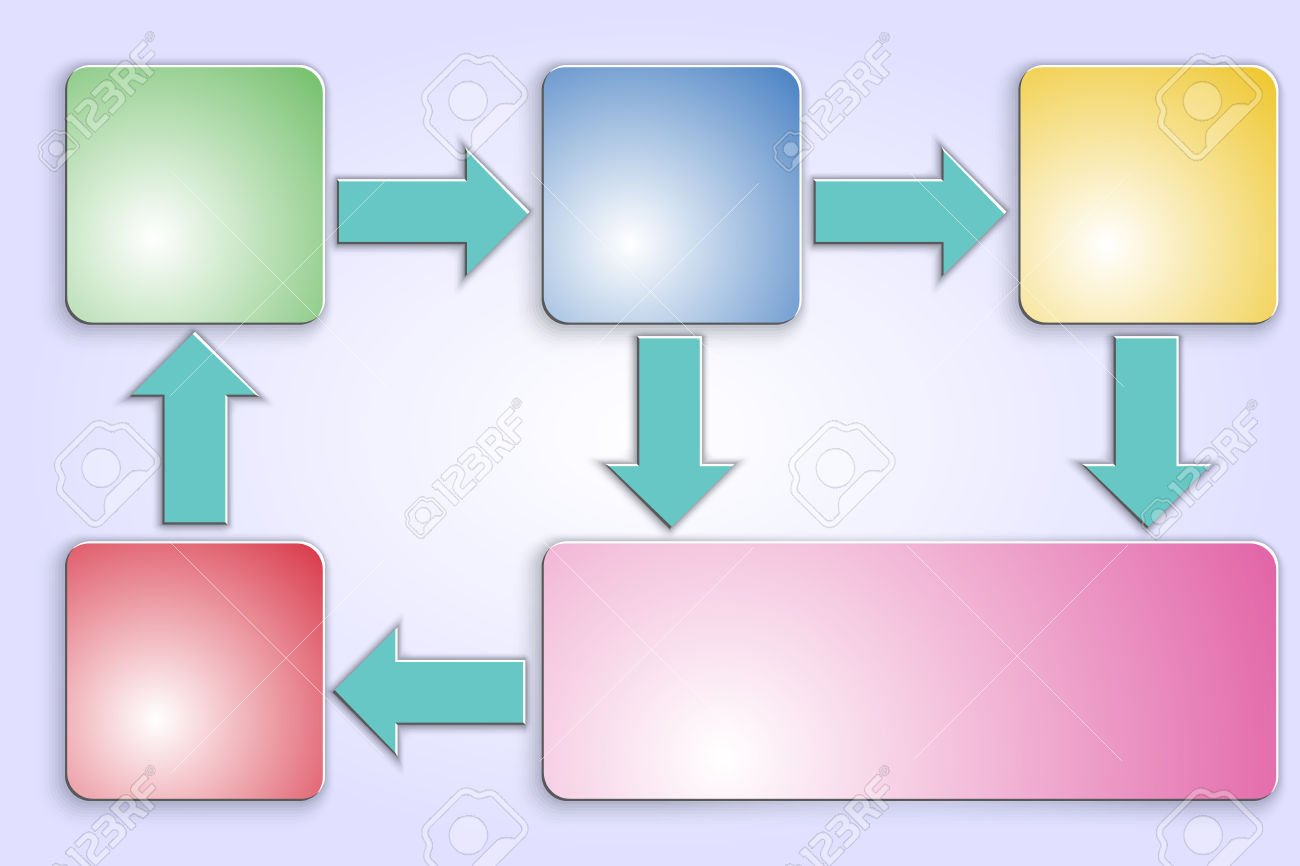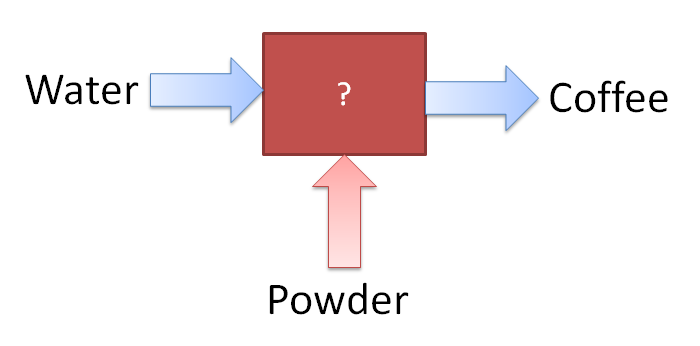
To solve a complex problem, the best way is to separate it into smaller and easier parts. This is the goal of the function analysis:
- Define main function
- Find accessory functions
- Split function into smaller functions
All this has to be done while keeping it strictly neutral. The functions should be spilt enough to have solvable parts, but not too much that it restricts the solutions.
After doing the market research for your product idea, a lot of similar products have been analyzed and can show what function separation was done.
Blocks and Arrows

To make things easy the function analysis consists out of two major parts:
- Arrows symbolizing flows
- Boxes symbolizing processes
The flows can represent the energy, material or information that is processed; whatever is processed or needed for processing. The flow is not always contained.
The boxes show the functions themselve. Here either things are transformed, mixed. Or otherwise used. Idealy the functions of the box are split up so often, that the result is an easy to solve function. After all the main difficult problem has to be split up into easy to solve functions.
Brewing coffee

Let’s take the example of a coffee machine. We put in coffee powder and water, and want to get coffee out. For the function itself we can assume a black box.

But then we have a cold coffee, with all the powder still in it. So we need to warm the water and filter the coffee powder out again. For heating we need energy and a heating function.

This is now a pretty functional coffee machine, but for the cherry on top we also want the coffee to stay warm after brewing.

This process can now be continued by adding a control for the heat, amount of water and an alarm when the coffee's done. But let’s not lose ourselves into detail.
Finding the Balance
Solving problems involves analyzing it to find the right angle to attack, so that the solution is efficient. At the same time the solution has to be easy, there shouldn’t be spend too much time analyzing. It may be fun and very exciting to find the one neat trick, but in this case more time has been spent analyzing instead of doing work. So the clock has to be kept in mind.
Problem Solving
While the problems here are of technical nature, this principle can be applied to all kinds of problems. If you need to reach a goal, try not to imagine the whole path but start with a single step and take one after another.
This principle of small task allows you to get started. Once you are on the way, the hesitation to do a little more is lower. Without noticing you will have covered a mile without noticing.
So when you are anxious about running those 5k in the morning, just put on your shoes and go for a little walk, once outside in a nice place you might start running a little, and once you started running you might as well continue for half an hour. Without much trouble you managed running your 5k.
So take it easy and go forward.

To be continued
Did you already read...
the first part: What does an Engineer do?
the second part: The first STEP on the way to YOUR Product: Inventing
the third part: The Other Kind of Research: Put your IDEA into the World
the fourth part: The Requirement List: The ENGINEERS way of TAKING AIM
